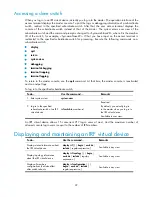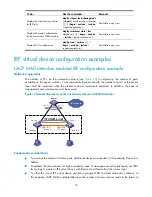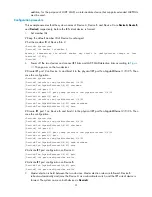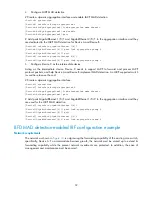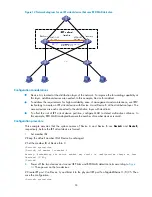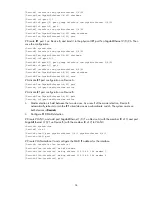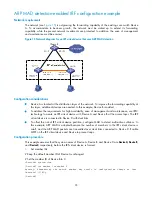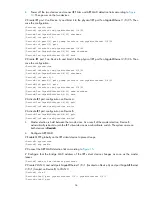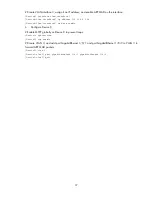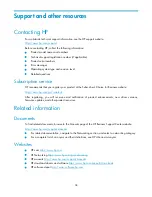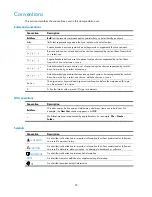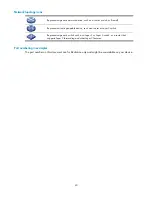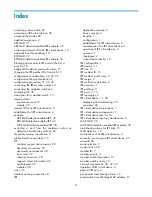
30
To do…
Use the command…
Remarks
Display the load sharing criteria
for IRF links
display irf-port load-sharing mode
[
irf-port
[
member-id
/
port-number
] ] [
|
{
begin
|
exclude
|
include
}
regular-expression
]
Available in any view
Display the master/subordinate
switchover states of IRF members
display switchover state
[
slot
member-id
] [
|
{
begin
|
exclude
|
include
}
regular-expression
]
Available in any view
Display MAD configuration
display mad
[
verbose
] [
|
{
begin
|
exclude
|
include
}
regular-expression
]
Available in any view
IRF virtual device configuration examples
LACP MAD detection-enabled IRF configuration example
Network requirements
The number of PCs on the enterprise network (see
Figure 13
) is outgrowing the number of ports
available on the access switches. To accommodate business growth, the number of ports at the access
layer must be increased while the present customer investments protected. In addition, the ease of
management and maintenance must be ensured.
Figure 13
Network diagram for an IRF virtual device that uses LACP MAD detection
Configuration considerations
•
To increase the number of access ports, additional devices are needed. In this example, Device B is
added.
•
To address the requirements for high availability, ease of management and maintenance, use IRF2
technology to create an IRF virtual device with Device A and Device B at the access layer.
•
To offset the risk of IRF virtual device partition, configure MAD to detect multi-active collisions. In
this example, LACP MAD is adopted because the number of access devices tends to be large. In














